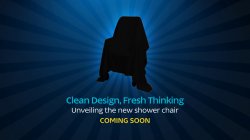Some track hoist systems require two carers to operate the hoist for safety reasons, and some companies and care providers state that it is their policy that staff only hoist a patient when there are two carers available to do so. It’s not a legal requirement for two people to use a hoist.
Why would two hoist operators be required?
Many organisations implement policies which require two people to operate hoists to prevent injury to both staff and patients. It is often a health and safety requirement in hospitals or care homes.
This not only helps prevent oversight, with two people taking care of patient lifting needs but reduces the physical load, simply making it easier to lift a single patient with the hoist. It may also be the case that the patient’s individual care plan requires that two carers are needed in lifting situations.
Some hoist systems actually require two people to use them because of the way that they operate - this is particularly common for older equipment. In this case, these hoists are moved manually and therefore require somebody to operate the hoist, as well as somebody to actually help the patient move.


Patient Lifting and Single-User Hoist Systems
Single-user ceiling hoist systems are available, which make it much easier for one person to hoist patients or loved ones without the requirement for a second person. They are commonly used for circumstances in which patients are moved often, for example in hospitals or care homes, as well as in domestic homes to allow people to move more easily between rooms with little or no assistance.
Single-user hoists can include turntables, track components and sensors which make it possible for one person to use an overhead hoist system safely.
At Wealden Rehab, our GoLift Ceiling Hoist is suitable for single-use, with a capacitive touch handset making it much easier for patients to participate even if they have limited use of their hands. This hoist includes a range of safety functions including emergency stop, emergency lowering, upper and lower limit detection, free-fall braking, soft start and stop, and overload protection.
To find out more about our ceiling hoist products or discuss your requirements with an expert, get in touch.

Featured products
Latest Blog Posts
Seasonal opening times 2025/26
2025 Holiday Season Update - Our team are here for you but we will be taking a break between the 24th December and 2nd January 2025.

New Shower Chair Innovation
Experience Wealden Rehab’s new shower chair innovation at the OT Show 2025

Responsive Care Equipment Supplier Across the UK
Supporting hospitals and care providers in unsettling times ...

NAEP Conference 2025
Meeting Occupational Therapists, Commissioners and Exploring Bariatric and Paediatric Solutions

Our Seasonal opening times 2024/25
Our team are here for you but we will be taking a break between the 24th December and 2nd January 2025.

Can a RAZ shower chair rust?
Get an in-depth look at the RAZ shower chair range and the protective features that make them built to last



